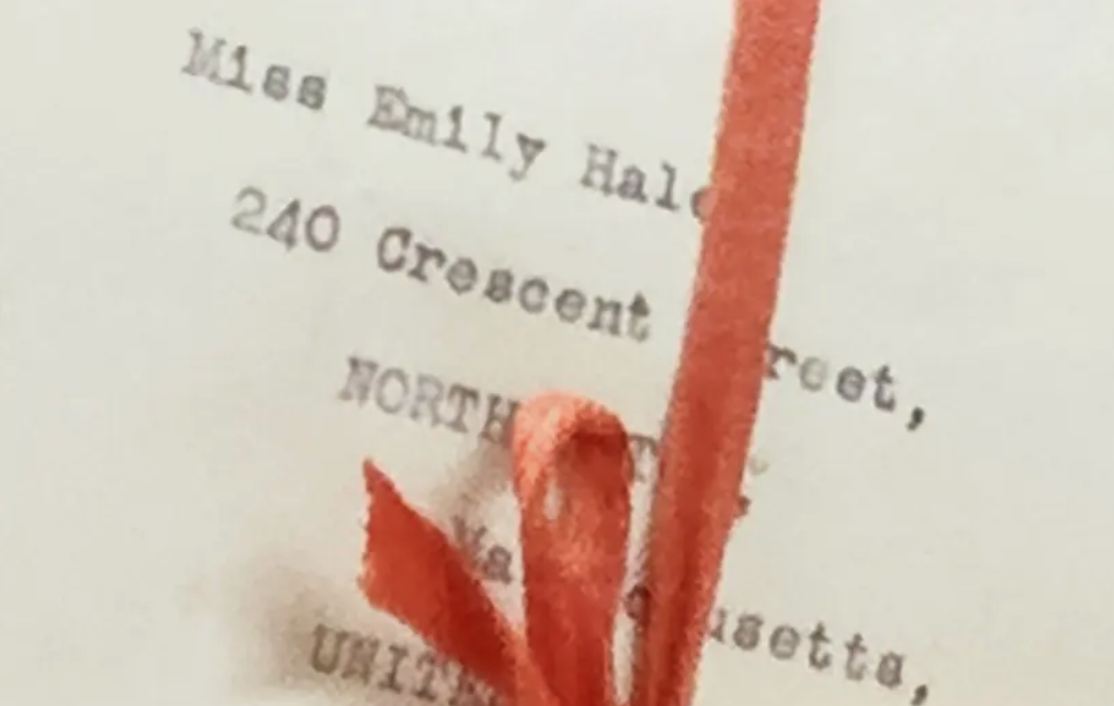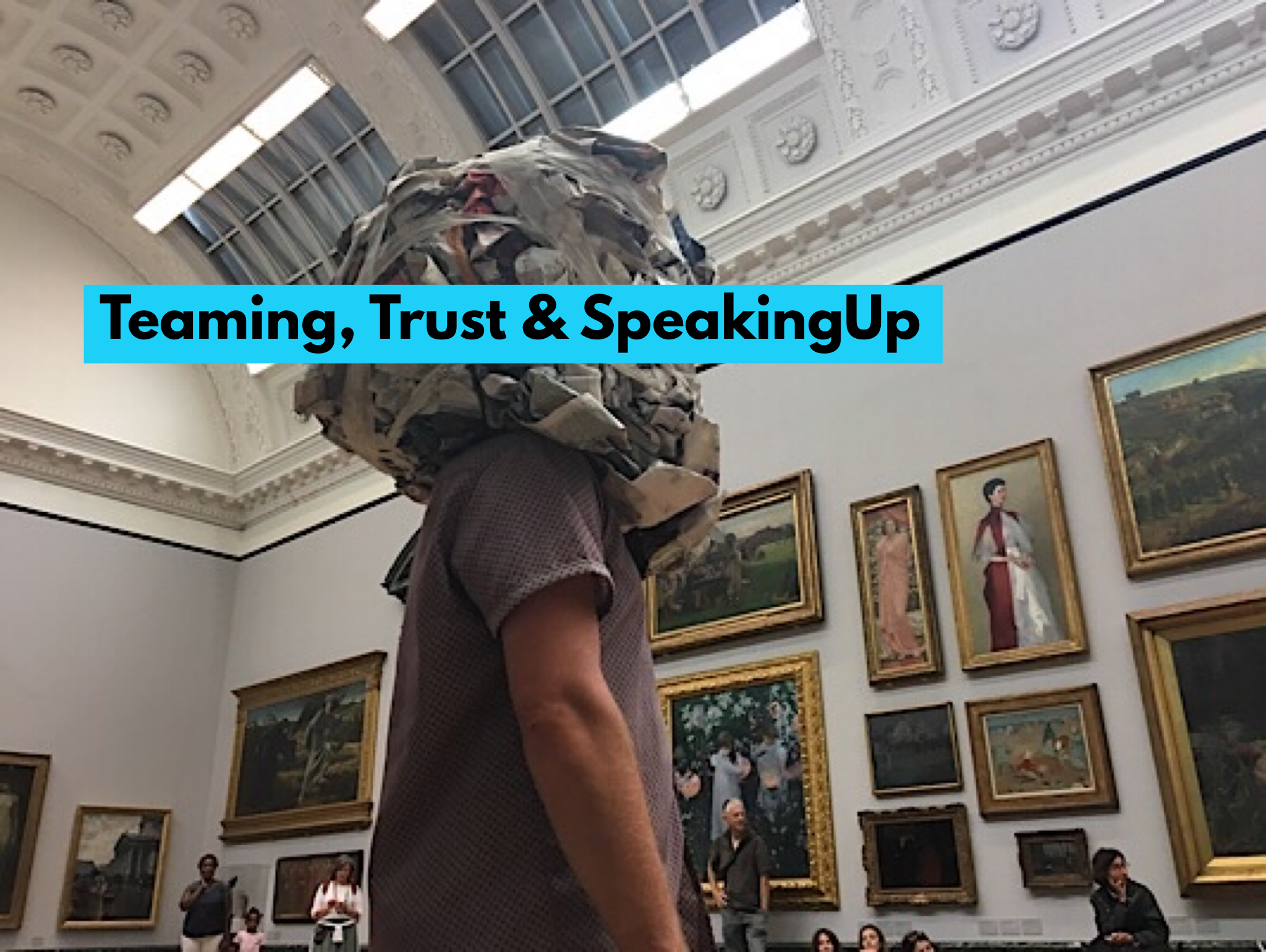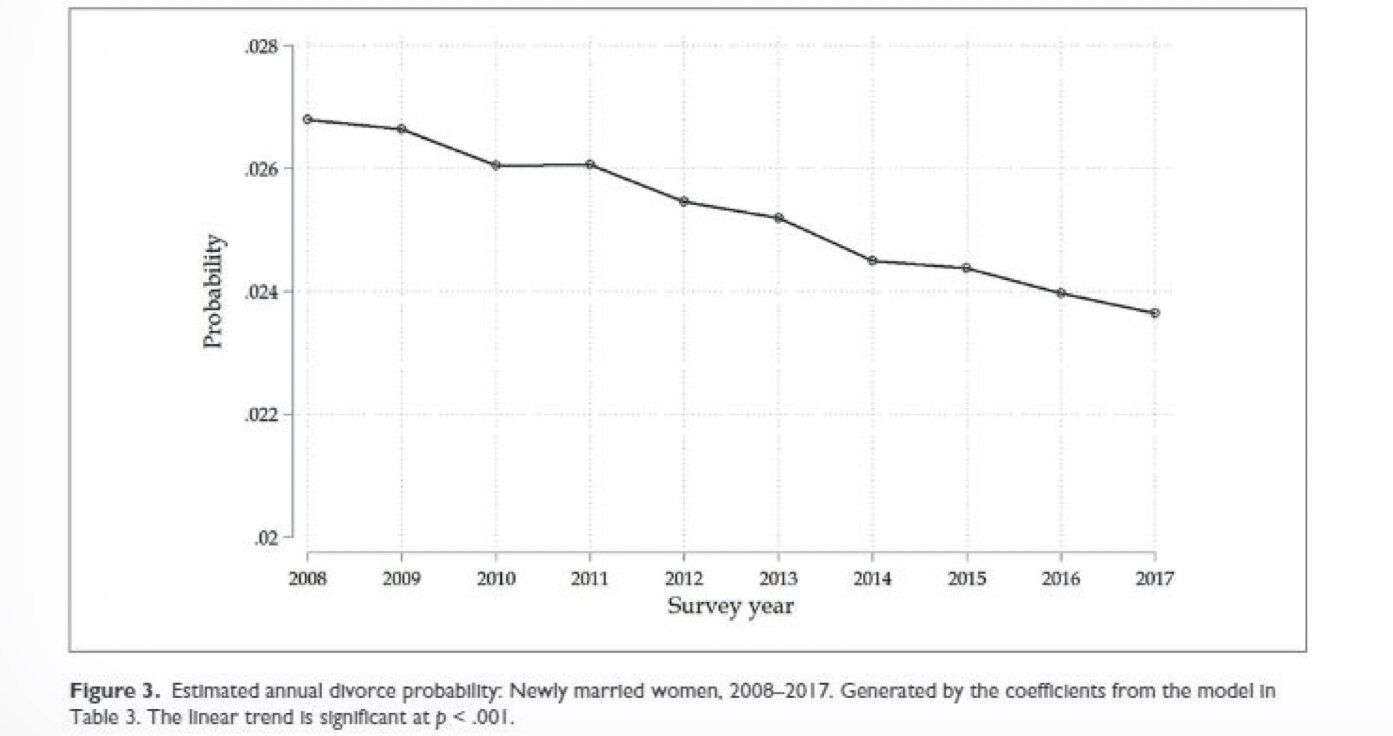Guest Blog: A report on using Open Space to talk about Climate by Nina Klose
Open Space really works!
Participatory format unlocks and empowers
Final session led to actionable next steps
At the suggestion of my friend Ben Yeoh, I recently attended Improbable Theatre Company’s 15th annual weekend workshop on the future of theatre. “Devoted and Disgruntled” had nothing to do with Climate Change. But the experience of being part of D&D15 allowed me to try out first-hand what it’s like to use Open Space facilitation.
Harrison Owen developed Open Space (also called “OST”) in the 1980s as a way to get a large group of people to explore complex topics in creative ways that lead to actionable takeaways.
According to openspaceworld.org, “All of the issues that are MOST important to the participants will be raised. All of the issues raised will be addressed by those participants most qualified and capable of getting something done on each of them. In a time as short as one or two days, all of the most important ideas, discussion, data, recommendations, conclusions, questions for further study, and plans for immediate action will be documented and in the hands of participants when they leave.”
Really, you have to try it yourself to understand how it can possibly work--but I’ll try to convey what it was like going to “Devoted and Disgruntled.”
“Prepare to be surprised,” warned a sign hanging overhead as I entered the Grand Hall of Battersea’s former town hall, graced with vaulted ceilings, exposed brick walls, and an air of ruined grandeur. Three hundred-and-some chairs stood in three concentric circles, leaving a large empty space in the middle. People were filing in, sitting in the circle, or catching up with friends in small groups around the hall. By roughly 11 am--the scheduled start time--most of the chairs had been taken.
Phelim McDermott, co-founder of the Improbable Theatre Company, opened the space. “Hello everybody, and welcome to ‘Devoted & Disgruntled 15: What are we going to do about Theatre and the Performing Arts?’ After fifteen years, the title ‘Devoted and disgruntled’ still gets laughs.” The weekend would be a chance for anyone to propose ideas for discussion, to meet like-minded people, and to come away with steps forward. For starters, we would all contribute to creating the agenda.
Phelim gestured to the far end of the hall, where empty bulletin boards awaited topics any of us could suggest. Saturday - Sessions 1, 2 and 3 were all empty; Sunday’s sessions, too, were a blank slate. “If you have a burning question, an idea or an issue, please! Come up here and write it down as a succinct, catchy title or a question.”
I had certainly come with questions: What is ‘Open Space’? Can today’s event actually address my focus issue, Climate Change?
Phelim explained the key principles of OST: in this first phase, called “opening,” anyone could come up and suggest a topic or question, then schedule it for a break-out session at the end of the hall. After that, discussion groups would form on all the topics, and the delegates would get down to business. All we needed to know for this to happen were the four principles of Open Space: Whoever comes are the right people. Whenever it starts is the right time. Whatever happens is the only thing that could have happened. When it’s over, it’s over. And to make it all work, there is the “Law of Two Feet/Mobility”. The Law means that you can move anywhere at any point during the conference. If you feel bored with the conversation you’re having, walk away. Join a different group, get a cup of coffee, chat to a friend. Break into song! Do a dance. The only limit is your own imagination.
While Phelim was talking, I was strategising. I had paid my choose-your-own entry fee of £45, and I wanted to get my money’s worth, even though my focus issue is Climate, not Theatre. And given I wanted to be home for dinner, I’d better make sure I got a slot in Session 1.
I was the second person to volunteer a topic.
“Hi, I’m Nina. I’d like to talk about Theatre + Climate Crisis.”
Dozens of other people got up after me. Each of them wrote out a subject or question, read it out on the mic, and posted it under a session time on the agenda board. There was space in the hall for 18 separate discussions during each 1.5-hour period, with a total of 7 different sessions scheduled over the two weekend days. Topics varied widely:
“Where are the emerging non-commercial producer training programmes/networks?” Ben M.
“Theatre of the Supernatural (Ghosts welcome).” Patrick.
“National Library of Things - A New Production Model.” Ethan.
“Theatre & Racism - Stop Talking, Start Challenging/Changing.” Shankuo.
“How? Theatre building a base to defeat the Tories.” Danny.
“How will I know when it’s time to start my group?” I asked a facilitator nervously.
“Don’t worry--you’ll know! It will be time once everyone has finished suggesting topics. They’ll move the chairs into circles. It will be obvious.”
Soon I noticed people moving the three concentric circles of chairs into a number of smaller circles, each marked by a flag fixed on a bamboo pole. I walked over to the break-out circle I had chosen, and wrote out “THEATRE + CLIMATE CRISIS” on flipchart paper. A few people sat down, then a few more. I suggested we go around the circle, introduce ourselves, and say something about our interest in Theatre and Climate. As more and more people joined, I kept having to break off for new arrivals to introduce themselves. It was a varied group--but not that varied: mainly Londoners. Nearly all White, middle-class, ranging in age from 20s to 70s. Most, but not all, had some connection to theatre.
I jotted down notes as people gave their introductions: Jasmine - Sustainability charity. Rhiannon - Royal Ballet. Andrea - designer/activist. Gregor - from Edinboro, actor. Barra - run 2 theatre companies, one aimed at families, the other at adults. Dan - performance & ecology. Ethan - production manager, doing a degree in mechanical engineering.
I worried that what typically happens in meetings would happen here: someone would hog all the attention and not let anyone else get a word in edgewise. But the conversation flowed freely and easily. Most people added something to the discussion, though some mainly listened. Four or five people had more to say, building off each other’s ideas.
Two main topics began to emerge from the conversation: sustainability and story. That is, how to produce theatre more sustainably? And how to tell stories of Climate Crisis, stories that raise awareness, inspire action, lead to change?
As I listened to people’s contributions, I suddenly realised where my own energy lay: how could we be using theatre to awaken people to the urgency of the Climate Crisis?
The discussion led to ideas to share with each other and a wider audience: websites to visit, nonprofits that do sustainable theatre. Check out Kris de Meyer’s TedX talk about polarised thinking. A book by Mary Robinson, Climate Justice Is a Manmade Problem with a Feminist Solution. This coming Friday, come along to a session at the V&A on Theatre and Sustainability, someone announced.
“How can we use Theatre to facilitate change? Audiences already know it’s a crisis. But how do we activate them?”
“How about ‘audience after-care’ - offer ideas of small steps people can take after they leave the theatre.”
The time flew by surprisingly quickly.
“Thanks for facilitating! It went great,” somebody said. People added their names to an email list I suggested we start, then wandered off to get some lunch. I used one of the laptops set up at the back of the hall to write up notes on the session. I felt energised: people had come to my session, and exchanged lots of ideas. So this is how Open Space works! But what about the action plans?
Thanks to the Law of Mobility, and Phelim’s open invitation to “come and go as you please,” I stayed home on Sunday to spend time with the family. But on Monday morning I decided to trek back to Battersea for the closing half-day, from 10:30 to 2:30.
I debated volunteering another topic when agenda-setting began on Monday. But something held me back. I didn’t feel a burning desire to bring up any specific subject. Maybe someone else would call a group that could use my energy. Several topics looked good, but I decided to start with Arne’s “Future-Forward Collective: what should it be?”
I was the first person to arrive. Another woman, Loren, came over, and we all chatted for a minute, then started our discussion.
“What do you think Future Forward could/should mean?” Arne asked, in a very nice, open way. “Nina, you can go first, because you got here first.”
“When I heard you say Future Forward I thought Great! That could be a theatre that does Climate actions. I’ve been thinking about whether Climate activism could really use more theatre in it. Maybe street theatre. Maybe somewhere free. Outdoors. Maybe go and make theatre with audiences…”
Arne was taking notes. “And what do you think, Loren?”
“It needs to include hope + imagination. Rapid response, and more sustained response--making the shows of the future. Throwing out idea-generation to the audience. And what about you, Arne? What do you think? We can be scribes so you can talk, if you like,” Loren offered.
“I’m a director,” Arne said. “And I’m really into Life Coaching these days. One of the exercises we do is, you imagine a goal. For instance, for me, it’s to put on a production at the Globe. So what I do is I imagine myself directing a show at the Globe. I imagine it really clearly: I’m there already. It’s happening. It’s in the future. And then I look back, and imagine what steps I needed to take to get to that place.”
“That’s it!” I said. “I really like that idea. It would be really good to imagine a positive outcome of the climate crisis.”
“Some of the sessions I went to yesterday,” Arne said, “talked about Climate. One of them talked about the possibility of a happy outcome, a good future in 2050. We could still get there.”
“Yes! Let’s have our event picture a positive 2050, or a positive climate future.”
By the end of 45 minutes we had come up with 6 specific, actionable takeaways, including:
Arne: discuss with Ben, director of Devoted & Disgruntled, about using their space/imprimatur to launch /host an adjunct OST D&D event. Talk with Tarek, director of Battersea Arts Centre, about venues/space
Nina: propose to Oxford Climate School (which I’m currently attending) to add an additional 9th session to the lecture series, offer to facilitate using Open Space, to discuss next steps amongst all the attendees at the Climate School. Try to convince local XR group to use Open Space at some upcoming meetings/events, because People’s Assembly, and the standard whoever talks loudest gets the last word feel not creative enough
“#bornatdnd” Arne wrote in big letters at the bottom of the flipchart page.
A few days after the event, Arne and I were discussing where to go with some plans we came up with on the weekend.
“It’s so great you had all those ideas,” Arne said to me.
“Me? I thought they were your ideas,” I said “It seemed like they just happened by themselves…”
We are planning a Climate UnConference for 1 May in London. Contact me to find out more (form on site or via social media).











